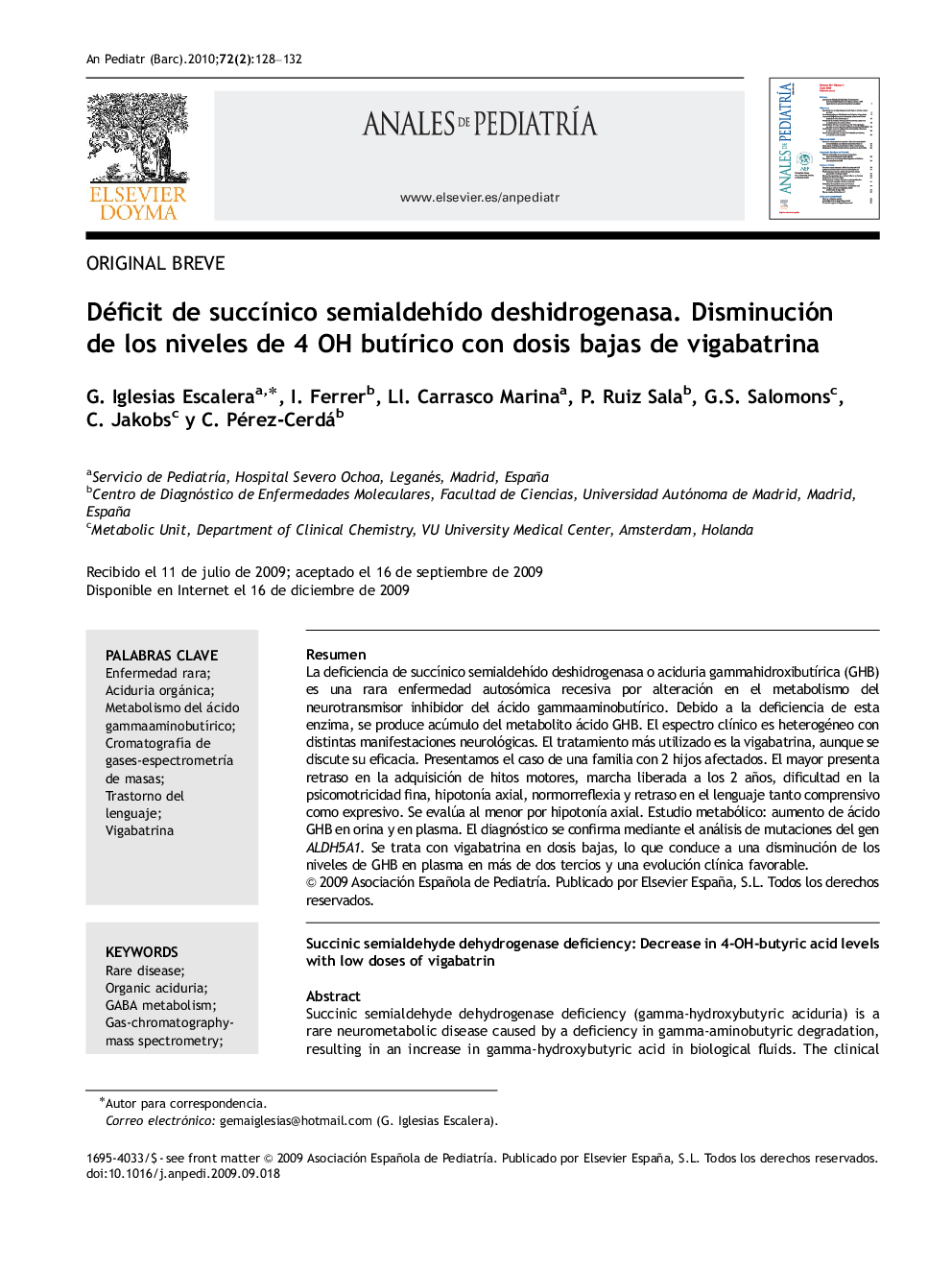| Article ID | Journal | Published Year | Pages | File Type |
|---|---|---|---|---|
| 4142477 | Anales de Pediatría | 2010 | 5 Pages |
Abstract
Succinic semialdehyde dehydrogenase deficiency (gamma-hydroxybutyric aciduria) is a rare neurometabolic disease caused by a deficiency in gamma-aminobutyric degradation, resulting in an increase in gamma-hydroxybutyric acid in biological fluids. The clinical spectrum is heterogeneous, including a variety of neurological manifestations and psychiatric symptoms. The treatment usually used is vigabatrin, but its clinical efficacy is under discussion. We present two affected siblings. The older brother was examined when he was 2.5 years old due to psychomotor and developmental delay, disturbances in motor coordination, axial hypotonia and language disability. His younger brother had mild axial hypotonia when 5 months old. Metabolic studies demonstrated a high plasma and urine concentration of gamma-hydroxybutyric acid. Mutation analysis of the gene ALDH5A1 confirmed the disease. After 1 year of treatment with low-doses of vigabatrin of the older patient, a decrease in gamma-hydroxybutyric acid plasma levels and a slow clinical improvement were observed.
Keywords
Related Topics
Health Sciences
Medicine and Dentistry
Perinatology, Pediatrics and Child Health
Authors
G. Iglesias Escalera, I. Ferrer, Ll. Carrasco Marina, P. Ruiz Sala, G.S. Salomons, C. Jakobs, C. Pérez-Cerdá,
